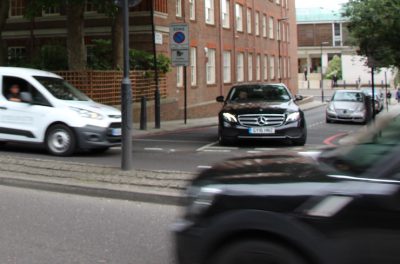London’s air pollution, while not nearly as bad as Beijing’s, is still worse than many major cities, such as New York and Sao Paolo. According to The Guardian, air pollution kills more people yearly than HIV/AIDS and Malaria combined.
According to a Guardian article from September 2015, ASL’s building is situated near a street with extremely high levels of air pollution. This means that when students are running around outside during PE or recess, they are breathing air that does not meet E.U. standards of acceptable air quality. This is not good news for the students’ health.

A recent study commissioned by the Mayor of London, Sadiq Khan, that was reported in The Guardian discovered that 802 educational institutions in London are exposed to illegal levels of air pollution, with children as young as three being exposed to unacceptable levels of air pollution. ASL is one of these schools. ASL is within 150 meters of a road which has levels of air pollution that exceed EU standards of air quality. The main chemical/pollutant coming from the traffic is Nitrogen Dioxide.
Nitrogen Dioxide is one of the major pollutants coming from road traffic and industry. Air pollution from this source leads to premature death of more than three million people a year globally. Air pollution causes premature death by affecting major organs inside the body, such as in the lungs and in the heart. In the lungs, it suppresses normal lung growth, accelerates the decline of lung function, and has been linked to lung cancer and asthma. In the heart, pollution has been linked to strokes and heart disease. In the brain, pollution affects physical growth in children and can even stunt fetal brain growth in pregnant women.
ASL has taken huge leaps toward making the air quality acceptable on the inside. Mr. Dean Evans, the building services and maintenance manager, explained how ASL handles this task. “The school has funnels that capture the particulate matter (air pollution) and keep it out of the school,” said Mr. Evans. “When we take a look at the funnels to clean them, about every six months, they are completely black.”
With ASL doing what it can on the inside, it’s up to the city and country to try and bring pollution levels down outside. Mr. Jim Heynderickx, director of operations, thinks that something can be done about the use of diesel fuel. “I think that they need to address diesel cars and need to move on and focus on hybrid cars.”
Mr. Kevin Moffat, the facilities manager, added, “It’s not just individual cars, it’s delivery lorries too.”
Living within a major metropolitan city, it is expected that students will be exposed to air pollution. Head of School Ms. Coreen Hester said, “I am dead set against air pollution and I am stressed to hear the recent news. The school is working hard to improve, yet unfortunately, most metropolitan city schools face the problem of air pollution, though we have spent a lot of time and money making the inside of ASL clean. I think that middle school students making posters and signs really helps spread awareness in our community.”
There are many easy and cheap things to do in order to combat the unhealthy levels of NO2. The cheapest and easiest is to plant trees. According to BBC, The average reduction of pollution or NO2 by a tree ranges from 7%- 24%. That means that there is more breathable oxygen near trees, even on a busy road. If every person in a city spent £3.07 a year on planting trees, it would save between 11,000 – 36,000 lives.
